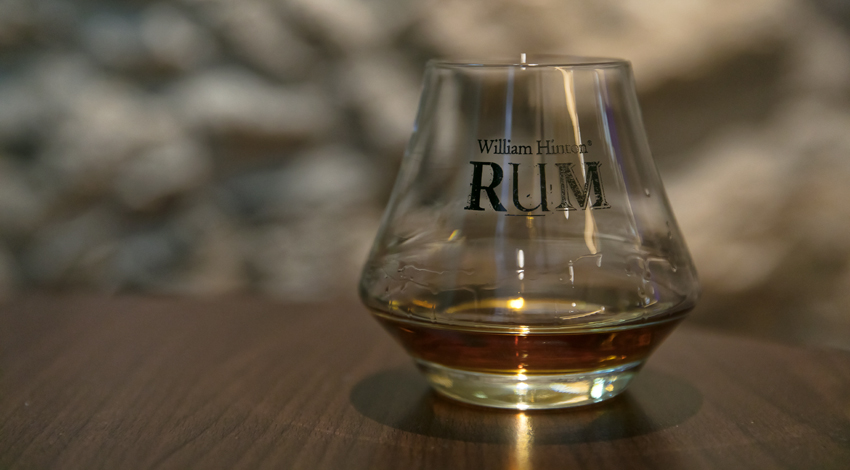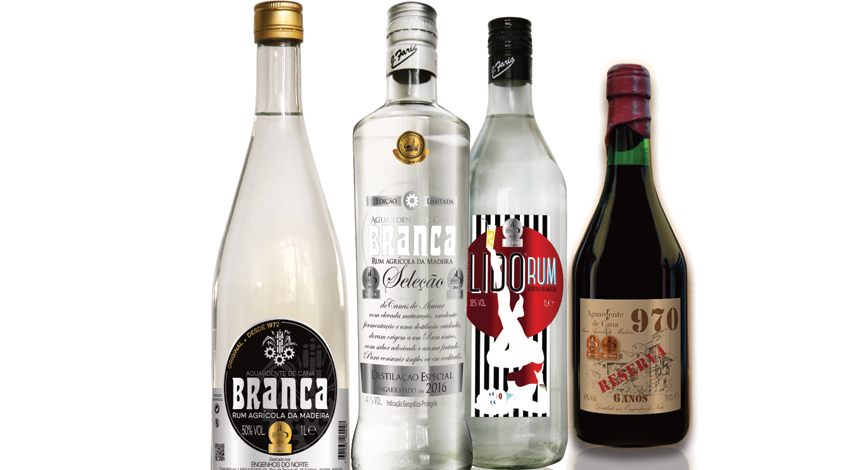A constant presence throughout the 600 years of human life on the island, Madeira Rum is now rising to international fame.

The perfect match for a good cigar; the star of an exotic cocktail or the main ingredient of a peerless poncha. All of these are roles that Madeira Rum excels at.
Known for the burning sensation it leaves off as it goes down one’s throat, Madeira Agricultural Rum is quite popular among locals being consumed in local pubs either raw or as an ingredient in the traditional poncha. Hidden away from the rest of the world for years, this beverage has been rediscovered as a hidden treasure and its fame reaches well beyond the waters surrounding Madeira.
A truly singular beverage in the market, Madeira Agricultural Rum is among the 5% of rums in the whole world to be produced directly through the fermentation of juice extracted from sugarcane. The remaining 95% of the market are produced industrially and derived from sugarcane treacle.
‘Persistent, fresh and mineral’… is how Madeiran sommelier Américo Pereira describes it. He is one of the people to have committed themselves to divulging Madeira Rum around the world. Listening to him, you can tell, the words come to him almost as easily as the senses are triggered by rum. With an alcohol content that usually sits somewhere between 40% and 50%, this is a lightly bodied rum and slightly sweeter on the palate. It boasts an aroma of fermented sugarcane and its ‘pungent notes of alcohol’ leave ‘a pleasant warmth’ on one’s mouth. Its notes of vegetables and ‘tropical fruits’, reminiscent of mango and melon, confer a more exotic tone upon the drink, explains the expert.

Even though it is produced in the traditional way the process itself is quite modern, employing machines while maintaining its artisanal identity. The whole process begins in the 155 hectares of sugarcane plantations that exist on the island. After the harvests, sugarcanes are mechanically pressed to produce fresh sugarcane juice ‘with high sugar content’ which is then moved on to fermentation. The next stop in this process is a series of copper stills where the product is distilled resulting in what is now known as Madeira Rum.
Its ageing process is also rather unique. As per the dictates of tradition, producers age their rum in oak barrels for long periods of time. This gives the rum very distinct shades of colour, flavour and aroma. Américo Pereira explains how these wooden barrels serve as a ‘lung’. ‘The barrel breathes, it expands and contracts’ according to the temperature. This leads to part of the water inside being evaporated and also gives the beverage its darker colours and a more herbal flavour as the years go by. Visually Madeira Rum can cover quite a wide range of colours, from absolutely colourless to citric yellow, golden and topaz. The matter of how long a batch is to age is something decided by the producers.
And age is the decisive factor when it comes to classifying Madeira Rum. Younger rum is kept in stainless steel tanks and is usually employed in the making of poncha. Older rums start at three years old. From six years onwards they are labelled as Reserva, a pre-vintage, so to speak, and can age up to 9, 12, 15, 18, 21 and 25 years old, the latter earning the label of Grande Reserva Premium, a true vintage.
Throughout the history of the island there have been dozens of factories connected to the production of rum. Nowadays there are three: Engenho Novo da Madeira, in Calheta, Sociedade dos Engenhos da Calheta, and Engenho do Norte in Porto da Cruz.

The internationalisation of Madeira Rum is a recent effort. It took about a decade’s worth of discussion in order for the traditional spirits from the island to have the official label of ‘Madeira Rum’. Once it was given its Protected Geographical Indication (PGI), the product then had to meet certain other criteria, namely an alcohol content ranging from a minimum 37.5% to a maximum of 60%; be produced in the Region of Madeira and Porto Santo and have its production consist exclusively of the fermentation and distillation of sugarcane.
Américo Pereira adds that Madeira Rum finds part of its identity in the island’s own exclusive attributes: its climate, the soil and the traditional and natural methods of plantation employed.
Meeting these standards has made it possible for Madeira Rum to be granted its own area in international fairs and competitions. And the results speak for themselves. Among other awards, Madeira Rum, specifically its ‘White’ variety has been awarded the Gold Medal at the International Spirits Challenge (ISC), one of the most acclaimed and respected competitions of its kind in the world, Américo Pereira mentions some further appearances made by Madeira Rum such as its participation in the Megavino festival, one of the largest international wines and spirits events and Salão Internacional do Sector Alimentar e Bebidas (SISAB), in Lisbon.
Though some locals may not yet be used to calling it ‘rum’, the word is certainly growing in popularity, very much so like the beverage itself. And its use is not limited to poncha.
At the Flair Spot, for instance, an irreverent bar in the oldtown of Funchal, rum is juggled through the air to make flamboyant cocktails. But drinking rum itself for its own flavour and characteristic aroma of wood is also gaining more popularity.
Rum has come to earn a place of its own at the table of epicureans, striking a perfect balance with a good cigar, the perfect ensemble to decelerate and enjoy yourself.












